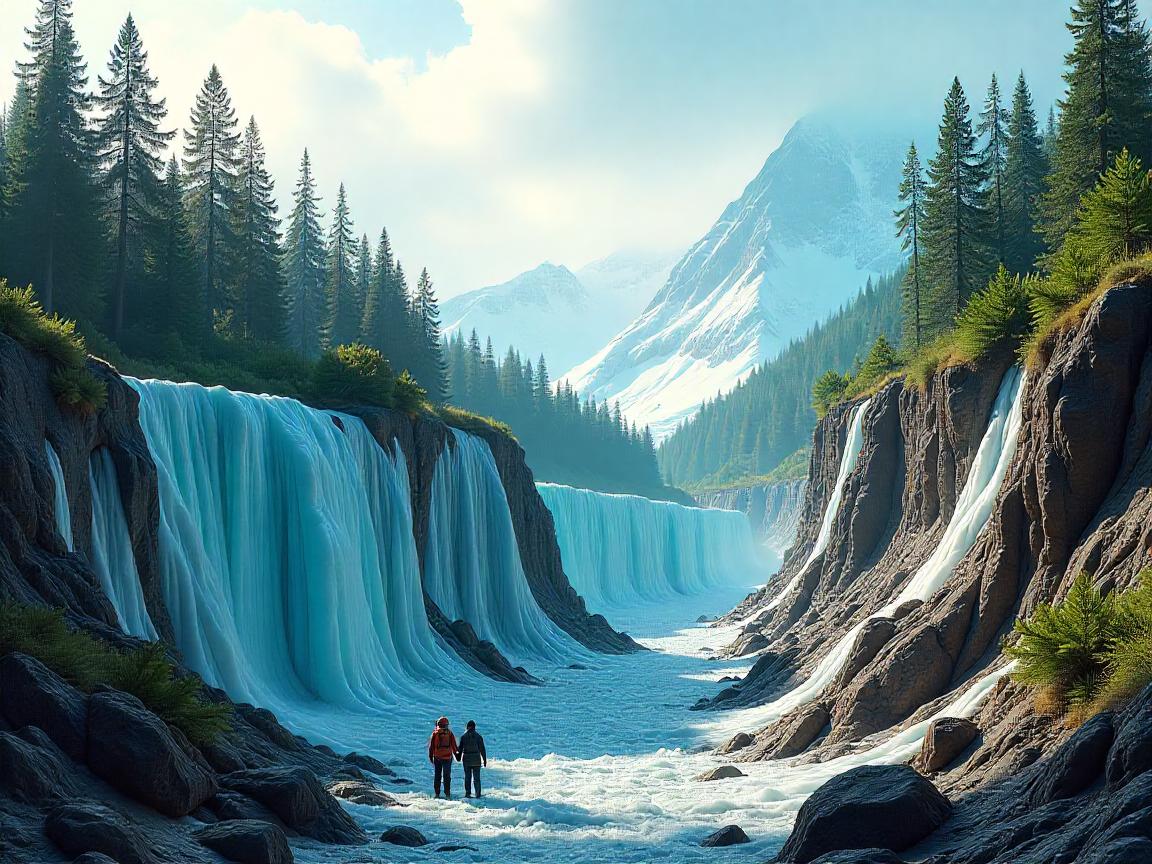
It was as though someone had dropped a drill deep into an area of seemingly bottomless Antarctic ice, and when they drew up the drill, they expected only sterile sedimentation—instead, they found the remnants of an ancient rainforest. An international team aboard the RV Polarstern found fossilised roots, pollen grains, and layers of spongy soils dating back almost 90 million years a few years ago. It is a discovery so shocking, it makes us believe everything that we believed about the polar past of our planet. Below the white wilderness were the remains of a temperate rainforest which lived in an environment of dinosaurs and high CO 2.
The thought of rich vegetation which lays over the South Pole is almost a poetic thing to stop and think about, isn’t it? However, there can be a much bigger implication to wonder than there currently is; this story is a warning to all of us as to how active and dramatic our planet can actually be.
Buried Clues: Fossils That Redefined Antarctica
In 2017, scientists drilled 30 meters beneath the sea floor off the Pine Island Glacier and drew cores of sediments that served as a record of time. A 2020 study in the journal Nature showed such cores contained remarkably well-preserved pollen and roots proving that mid-Cretaceous Antarctic Circle was the place of dense forests. That is almost difficult to imagine nowadays. Nonetheless, researchers can use these samples to model temperatures that show annual temperatures ranging between 12 °C (54 °F) and 19 °C (66 °F), even during the four months when the sun goes dark at the poles. High-resolution CT scans revealed complex root systems, indicating that a healthy ecosystem of conifers, ferns, and flowering plants might be present.
Key Evidence:
- Radiometric dating dated the layers of soil at about 90 million years.
- Analysis of pollen demonstrated close associations with temperate forests evident in the contemporary New Zealand.
- The carbon isotopes indicated levels of CO 2 in the atmosphere between 1,000 ppm of carbon – almost three times modern concentrations.
Such a find is in line with other recent ones that have been made in Arctic Canada where scientists have been able to dig up the remains of fossils that are like and therefore indicating that polar regions were green, humid and surprisingly bio-diverse.
When Rainforests Ruled the Poles
It almost feels unreal to imagine that the present-day coldest location on planet earth which is Antarctica was once considered to be a green land full of wetlands and rivers. Most likely, the rainforest Dr. Johann Klages, who co-led the drilling expedition, did not resemble steamy jungle-like but more like the Pacific Northwest. During the long winter plants would retard their metabolism (and drop their leaves as do deciduous plants now). But eventually this strong forest disappeared once the levels of CO 2 had decreased and a trend towards cooling had started.
Just imagine that vegetation covered approximately 80 percent of the continent and sea level rose more than 170 meters higher. Imagine the tall buildings drowning into the warm shallow waters as the coastal reminder of how drastically the climate can change. A Scientific American report as recent as last year was expressing concern that that, without knowledge of these ancient mechanisms, it is difficult to predict scenarios of sea level rise today.
Echoes of Ancient Change in a Warming World
I find in this discovery both hope and alarm, as a climate journalist with more than ten years experience. It demonstrates that it is possible that Earth can recover after jaw-dropping extremes; however, it also highlights the rate at which ecosystems may fall apart. Dr. Jane Francis of the British Antarctic Survey says we should recently view such fossils as a wake-up call.” Or, phrased a bit more smoothly. As long as CO 2 remains too high, there is no hope of polar ice survival.
Data in the Recent Past:
- 2023 NOAA data show that the amount of CO 2 in the air today has reached 424 ppm an increase that continues to grow at an unabated rate.
- According to a 2024 report by the IPCC, we could reach 500 ppm in 2070 if we don’t control our emissions.
- More than 3.6 billion individuals occupy the coastlines, and a considerable rise in sea level would endanger them.
These statistics are not hypothetical and are a new reality.
A Story of Resilience—and Fragility
Ultimately, the Antarctic rainforest cannot just be described as a scientific wonder. It is evidence that life perseveres, changes, and in some cases vanishes when the boundaries of environment are crossed. Perhaps this is the lesson that should be taken onwards. People cannot turn it on and off like a light switch without any agreement.
If the Earth had the power to change like a desert covered with ice and then changed to rainforest and vice versa, what future are we putting into a motion in the present? It is a question that is not worthy of only scientific debate, but (also) mass action.